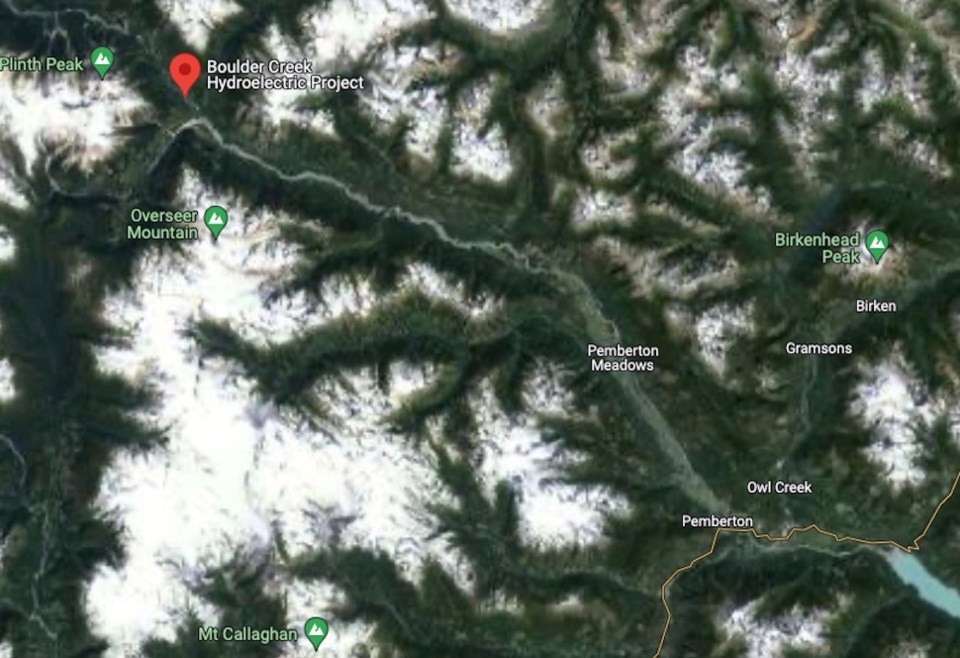The Squamish-Lillooet Regional District (SLRD) has given first reading to worker housing proposed for the Boulder Creek and Upper Lillooet River hydroelectric facilities, northwest of Pemberton.
Although there is already a temporary residence near the site of the Boulder Creek facility on the Lillooet River Forest Service Road, its location has "presented challenges for access and safety reasons," according to presented at the SLRD's March 27 board meeting.
Those challenges prompted an application to build new facilities on a nearby plot of land that was previously used for a work camp when these facilities were originally constructed. The site was decommissioned after construction wrapped in 2017, and has since sat unused, although it retains site servicing, including electricity, water and septic connections.
The proposal calls for housing for up to 20 people on a 6.78-hectare parcel, made up of six modular buildings with two sleeping units each, and one space for overflow residence.
for electrical equipment, general storage, water treatment, and a gym, all located in sea cans. The proposal also includes a workshop in a dome shelter.
Despite the temporary nature of the structures proposed, the applicant has applied to the Ministry of Forests for a Crown Land Tenure for the new operator's residence, which, if approved, would remain for the more than 30-year lifespan of the hydroelectric facilities on the site.
SLRD board member and Whistler Mayor Jack Crompton queried why the SLRD would not require more permanent structures on the site, alongside the operator's residence. Staff said the site's remoteness, located about 75 kilometres from Pemberton and 45 km down the forest service road, was the primary factor in recommending the application go ahead with the more temporary structures included.
“It is in temporary-type structures given the remoteness of the location and the difficulty to get trades in to build more substantial housing,” said staff.
In the end, Crompton supported the staff recommendation, while reiterating he would have liked to see longer-term buildings on the site.
“But, the remoteness does make sense, so I’ll support it,” he said.
Area C director Russell Mack highlighted that the residence would be occupied solely by workers, not their families, on a rotational basis, and that no nearby communities would see the structures, given the site's remote location.
The board voted to support the recommendation, giving first reading of a zoning amendment bylaw that would allow employee housing for the Boulder Creek and Upper Lillooet River Hydroelectric facilities, and to refer the item to the appropriate First Nations, the Village of Pemberton, and relevant provincial agencies for comment.
Only SLRD board member and 撸奶社区Councillor Chris Pettingill voted against, noting that he expected higher quality buildings on the site given the long lifespan of the hydroelectric facilities and associated operator's residence.
As the bylaw amendment includes housing that falls within Area C’s official community plan, there will be no public hearing, as per provincial legislation, but the public will be given notice.
The next step will come after the 30-day referral period has lapsed for relevant stakeholders to make comment. The Lil’wat Nation has already provided a letter of support for the project to the SLRD and B.C.'s Ministry of Forests.
More technical building details will come through the building permit stage of the application, should it proceed. The project will also require a wildfire protection development permit.
Both the and facilities began operating in 2017. Between them, the two facilities have a nameplate capacity of 106.7 megawatts, generating enough energy to power almost 32,000 homes. They are owned and operated by Quebec-based company Innergex, which constructed them for BC Hydro. They are both run-of-river facilities that a portion of the river for electricity generation.


